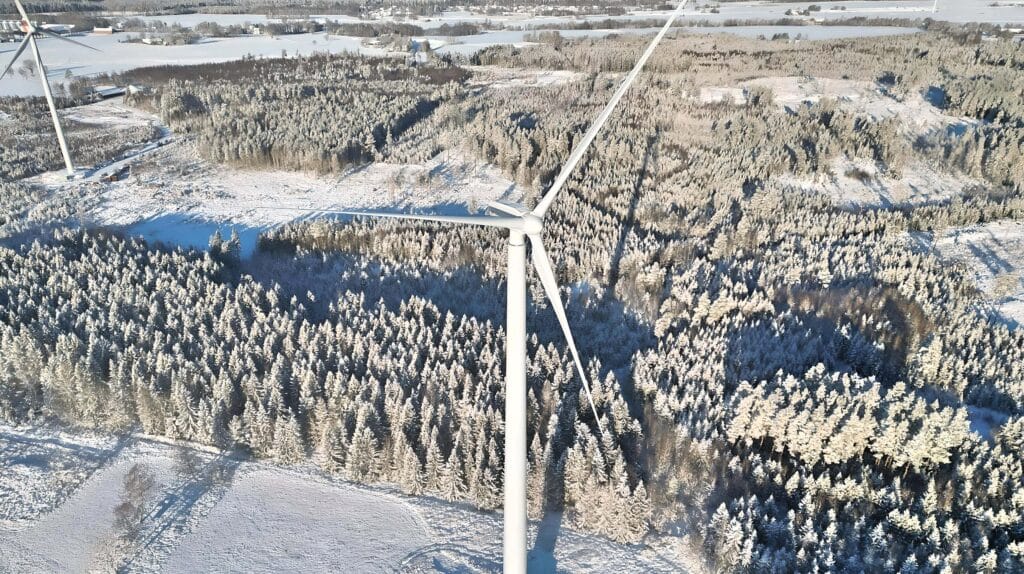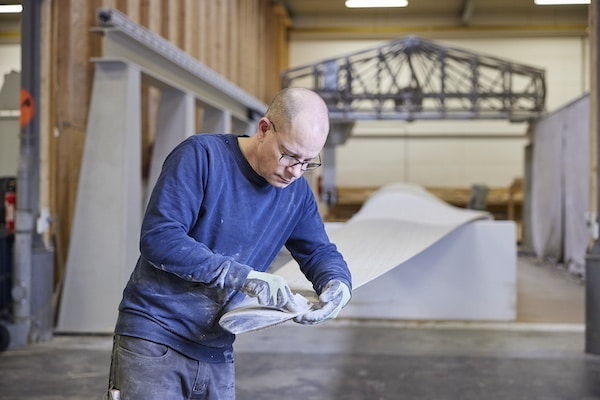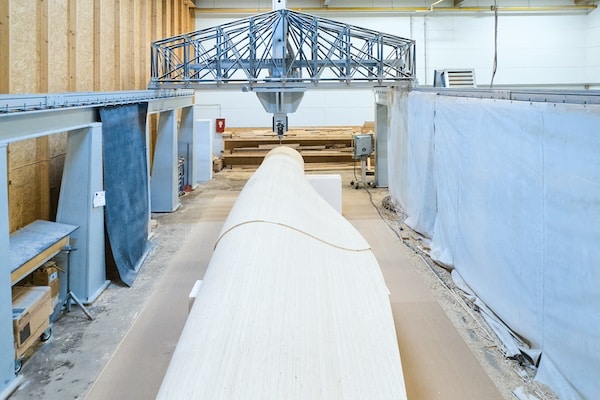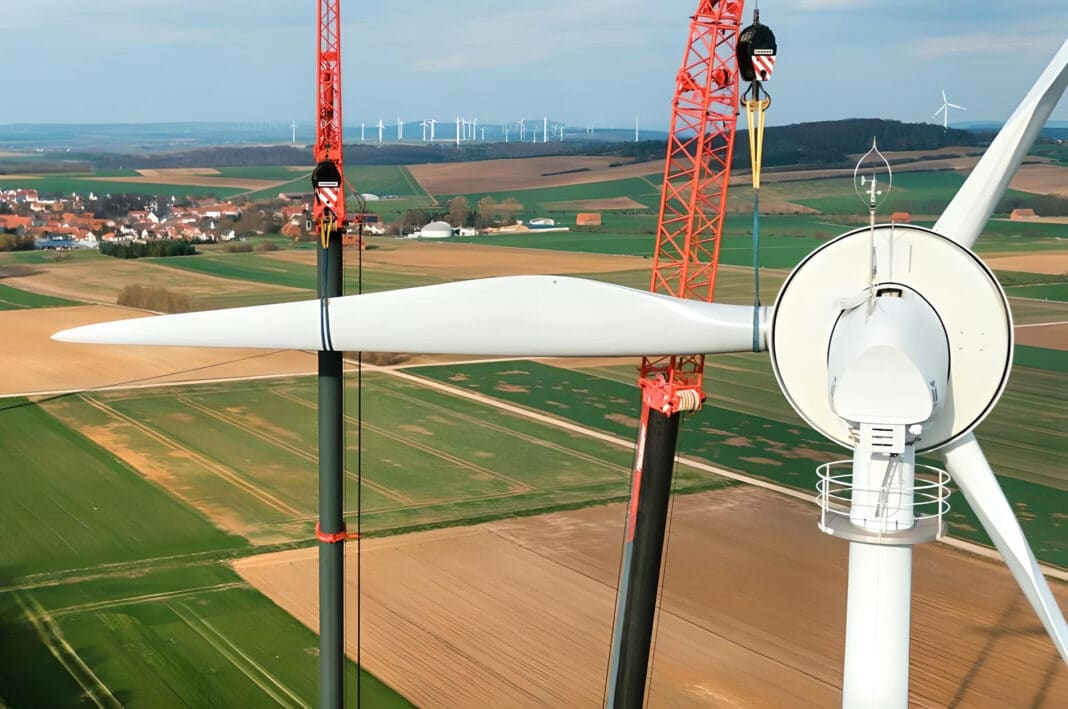The world’s first all-timber, fully recyclable blade has been designed and installed over a massive wind turbine in Germany, marking a huge shake-up in the US $100 billion wind-powered renewable energy market.
Now, in more than 50 countries, the upside of wind turbines is enormous, with demand expected to grow 50% over the next five years—reaching at least US $150 billion by 2030.
Last year, the Global Wind Energy Council, as part of COP28, stated that “massively scaling up utility-scale wind energy is a clear “win-win” for lowering energy prices, stimulating investment, economic growth and job creation and achieving climate targets while supporting energy security.

However, while European manufacturers have successfully used mass timber to create enormous turbine frames, an all-timber blade has been elusive – with the current generation of blades made from a mix of fibreglass, ceramics, balsa wood, nickel, glass, carbon, epoxy resin and polymer matrixes.
The problem with the current blades is that, unlike turbine frames, fibreglass and epoxy resin cannot be upcycled with materials destined for landfill after decommissioning, which is problematic in the push to full circularity.
That has now changed with German-based Voodin Blade Technology using laminated veneer lumber and a high level of automation to develop 20m long, highly durable blades that can thrive in all conditions.


Importantly, the new blades can be used in new turbine installations and the widespread replacement of the first generation of wind turbines, which need replacement after 20-25 years of service.
“At the end of their lifecycle, most blades are buried in the ground or incinerated. This means that—at this pace—we will end up with 50 million tonnes of blade material waste by 2050,” according to Tom Siekmann, the CEO of Voodin Blade Technology. “With our solution, we want to help green energy truly become as green as possible.”
According to Mr Siekman, Voodin uses CNC milling to create complex 3D shapes, with a media statement confirming that “this allows for a high level of automation, as no mold is needed in the manufacturing plants.”
The result is greater flexibility in blade design “because the technology can be used for manufacturing any type of blade,” and by increasing the level of automation, “the need for labour decreases.”
“As a result, manufacturing does not need to be done in countries with lower labour costs,” Voodin said, “this then means that production is also possible closer to the wind farms, allowing transportation costs and emissions caused by transportation to be reduced.”
Using laminated veneer lumber – a mass timber construction system invented in Australia during the 1970s before being embraced by European timber manufacturers, multiple layers of rotary-peeled veneers are bonded together using a moisture-resistant adhesive.
Thanks to laboratory testing, Voodin Blade Technology can guarantee that the material will thrive in even the toughest conditions of onshore wind energy production, which accounts for 85% of the wind energy sector.
“We have conducted hundreds of laboratory tests during the past two years to perfect the blade material,” says Jorge Castillo, one of the co-founders of Voodin. According to all our tests, our blades are even more durable than the existing fibreglass blades, as they show fewer fatigue characteristics and are proven to endure all kinds of onshore weather conditions exceptionally well.”
The prototype blade has been installed on an existing wind turbine in Breuna, Germany, near Kassel. Wood Central understands that the next step involves building larger prototypes – starting with a 60-metre blade followed by an 80-metre blade.
- To learn more about how laminated veneer lumber is already used to construct 100-metre-plus wind turbines, the engineering behind the turbines and why wind energy could become the largest consumer of laminated veneer lumber, click on Wood Central’s special features.






